Related Research Articles
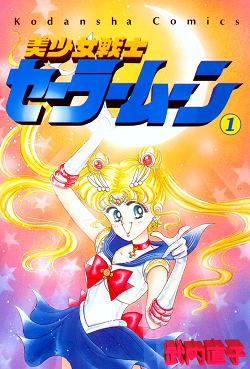
Sailor Moon is a Japanese manga series written and illustrated by Naoko Takeuchi. It was originally serialized in Kodansha's shōjo manga magazine Nakayoshi from 1991 to 1997; the 52 individual chapters were published in 18 volumes. The series follows the adventures of a schoolgirl named Usagi Tsukino as she transforms into the eponymous character to search for a magical artifact, the "Legendary Silver Crystal". She leads a group of comrades, the Sailor Soldiers, called Sailor Guardians in later editions, as they battle against villains to prevent the theft of the Silver Crystal and the destruction of the Solar System.

Luna is a fictional character in the Sailor Moon media franchise. She is a black cat who has the ability to talk, and serves as a mentoring figure for the titular character and her companions, the Sailor Guardians. Luna makes her debut in the first act or episode of each version of the series, in which she meets Usagi Tsukino and tells her she is Sailor Moon, and gives her a brooch that allows her to transform. Luna features prominently in the first story arc, and although she becomes a supporting character for the rest of the series, she keeps providing the Sailor Guardians and Tuxedo Mask with advice, her family relationships are explored alongside her partner Artemis and their daughter from the future Diana, and she even manages to transform into a human being at key points of the series.

Sailor Saturn is a fictional supporting character in the Sailor Moon manga, the 1992–1997 anime series created by Naoko Takeuchi and the 2014–2023 reboot that more closely follows the manga. Her spirit resides deep within twelve-year-old Hotaru Tomoe, a frail middle schoolgirl who is her lookalike reincarnation, which makes Sailor Saturn her alter ego; entirely apart from how the other nine Sailor Guardians' are reborn and their human identities entirely separate.
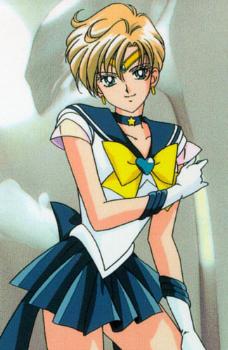
Sailor Uranus is a fictional lead character in the Sailor Moon media franchise. Sailor Uranus' alternate identity is Haruka Tenou, a teenage Japanese student and race car driver. Haruka is a member of the Sailor Guardians, female supernatural fighters who protect the Solar System from evil.
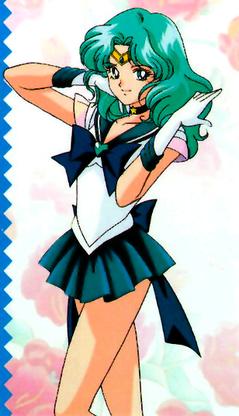
Sailor Neptune is a fictional lead character in the Sailor Moon media franchise. Her alternate identity is Michiru Kaiou, a teenage Japanese schoolgirl and violinist. Michiru is a member of the Sailor Soldiers, female supernatural fighters who protect the Solar System from evil.

The fourth season of the Sailor Moon anime series, Sailor Moon SuperS was produced by Toei Animation and directed by Kunihiko Ikuhara. It adapts the "Dream" arc of the Sailor Moon manga series by Naoko Takeuchi and follows the adventures of Usagi Tsukino and her fellow Super Sailor Guardians. The series is divided into two story arcs: the first arc for 22 episodes depicts a mighty deity known as Pegasus, entering Chibiusa's dreams to flee from the Amazon Trio, minions of the Dead Moon Circus, who are trying to steal the legendary Golden Crystal from him. The second arc for 17 episodes depicts the arrival of the Amazoness Quartet, a group of enemies who dream of remaining young forever, as well as Queen Nehelenia, the depraved ruler of the Dead Moon Circus.

Anza Ohyama, also known as simply Anza, is a Japanese singer and theater actress best known as vocalist of the heavy metal band Head Phones President and for playing Sailor Moon in thirteen separate musical productions.

Sailor Moon Sailor Stars, or simply Sailor Stars, is the fifth and final season of Sailor Moon, a Japanese magical girl anime series based on the Sailor Moon manga series by Naoko Takeuchi; the season was directed by Takuya Igarashi and produced by Toei Animation. Like the rest of the Sailor Moon series, it follows the adventures of Usagi Tsukino and her fellow Sailor Guardians. The season is divided into two story arcs, with the first 6 episodes consisting of a self-contained arc exclusive to the anime in which the Sailor Guardians encounter Queen Nehelenia again. The remaining 28 episodes adapt material from the "Stars" arc of the manga, in which the Sailor Guardians meet up with the Sailor Starlights, led by Princess Kakyuu. They discover that Sailor Galaxia, the leader of the "Shadow Galactica" organization and a corrupted Sailor Guardian, plans to increase her powers and rule the Milky Way.

The second season of the Sailor Moon anime series Sailor Moon R, was produced by Toei Animation and directed by Junichi Sato and Kunihiko Ikuhara. According to the booklet from the Sailor Moon Memorial Song Box, the letter "R" stands for the word "Romance", "Return" or "Rose".
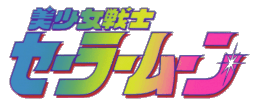
The first season of the Sailor Moon anime series was produced by Toei Animation and directed by Junichi Sato. It was broadcast from March 7, 1992 to February 27, 1993 on TV Asahi. This season adapts the first arc of the Sailor Moon manga series by Naoko Takeuchi, the "Dark Kingdom" arc.

The third season of the Sailor Moon anime series, Sailor Moon S, was produced by Toei Animation and directed by Kunihiko Ikuhara. It began broadcasting on TV Asahi on March 19, 1994, and ended on February 25, 1995. It adapts the "Infinity" arc of the Sailor Moon manga series by Naoko Takeuchi, and follows the adventures of Usagi Tsukino and her fellow Sailor Guardians. In this season, they must fight against the Death Busters, who are planning to take over Earth. In 2000, Cloverway Inc. licensed the season for an English-language broadcast in North America. Optimum Productions dubbed the season, continuing over from the first two seasons that were licensed by DIC Entertainment and General Mills' The Program Exchange. The series aired on YTV in Canada, who adjusted the episode numbers to match those of the original Japanese version, from June 12, 2000, to August 1, 2000. The season later aired on Cartoon Network's Toonami programming block in the United States. Edited and unedited VHS tapes and uncut bilingual DVDs of their adaptation were released by Pioneer Entertainment. In contrast to DIC's handling of the first two seasons, Cloverway retained the background music and sound effects from the original Japanese version. Eventually, the season was re-licensed by Viz Media in 2014 for an updated English-language release, produced by Studiopolis. The first 18 episodes of the season were released as Part 1 on November 15, 2016, and the remaining 18 episodes were released as Part 2 on June 20, 2017. While Sailor Moon S began very similarly to the first two seasons, it eventually took a darker, more emotional turn.

Bishōjo Senshi Sailor Moon: Another Story is a role-playing video game developed and published by Angel exclusively for the Super Famicom in Japan on 22 September 1995. Based upon Naoko Takeuchi's Sailor Moon shōjo manga and anime series, the game takes place between the third season and fourth season of the anime series, which adapted the third and fourth arcs of the manga respectively, as players take control of either the five Inner Guardians or the four Outer Guardians in order to protect Crystal Tokyo by fighting against a group of rebels and several of their previously defeated enemies once again that were resurrected by the sorceress Apsu.

Chibiusa is one of the main characters from the Sailor Moon manga series created by Naoko Takeuchi. She is introduced in Chapter 14, "Conclusion and Commencement, Petite Étrangere", first published in Nakayoshi on July 6, 1993. She is a small child from the 30th century who time travels to the past to seek help from the Sailor Guardians. She later returns, a few years older, in order to train as a Sailor Guardian herself—Sailor Chibi Moon, translated as "Sailor Mini Moon" in the DIC and Cloverway English adaptations.
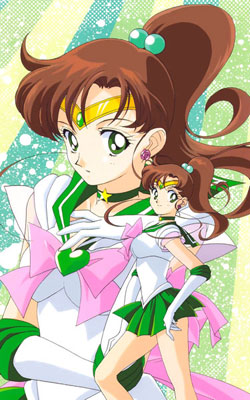
Makoto Kino, better known as Sailor Jupiter, is a fictional character in the Sailor Moon manga series created by Naoko Takeuchi. Makoto is her sailor form's alternative human identity as part of the Sailor Guardians, female supernatural fighters who protect the Solar System from evil.

Pretty Soldier Sailor Moon S is a fighting game developed by Tose and published by Bandai exclusively for the 3DO Interactive Multiplayer in Japan on 17 March 1995. It is based upon Naoko Takeuchi's Sailor Moon shōjo manga and anime series, though its gameplay has been compared with other titles in the same genre such as SNK's Samurai Shodown. Loosely following the third season of the anime series, which adapted the third arc of the manga, the players control either one of the five original Inner Senshi or one of the three Outer Senshi as they enter a tournament to fight against each other and become the winning victor. Takeuchi supervised the production of the project and seiyūs from the anime series returned to reprise their roles.
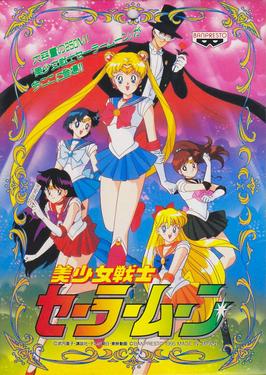
Pretty Soldier Sailor Moon is a side-scrolling beat 'em up arcade video game developed by Gazelle and released on March 22, 1995. It was published by Banpresto. It is the first game to be created by Gazelle, one of the offshoots of defunct developer Toaplan that were founded after they declared bankruptcy in 1994, and one of the few titles based upon Naoko Takeuchi's Sailor Moon shōjo manga and anime series that had an official international release, and it also has been compared with other titles in the same genre such as Capcom's Final Fight and Technōs Japan's Double Dragon.

Sailor Moon is a side-scrolling beat 'em up video game originally developed and released by Angel in Japan on August 27, 1993 and later in France and Spain in November 1994 by Bandai for the Super Nintendo Entertainment System. It is the second game to be created by Angel based upon Naoko Takeuchi's Sailor Moon shōjo manga and anime series, the first for the Super NES and one of the few Sailor Moon titles that had an official international release.

Bishōjo Senshi Sailor Moon R is a side-scrolling beat 'em up video game developed by Angel and published by Bandai in Japan on December 29, 1993. It is the third game to be created by Angel based upon Naoko Takeuchi's Sailor Moon shōjo manga and anime series, as well as the second title in the franchise for Super Famicom, serving as the sequel to Sailor Moon.

Bishōjo Senshi Sailor Moon SuperS: Shin Shuyaku Sōdatsusen is a 1996 fighting video game developed and published by Angel for the PlayStation and Sega Saturn. It is based upon Naoko Takeuchi's Sailor Moon shōjo manga and anime series. Loosely following the fourth season of the anime series, which adapted the fourth arc of the manga, the players control either one of the five original Inner Senshi or one of the four Outer Senshi as they enter a tournament to fight against each other and become the winning victor. The game was created by most of the same team who worked on previously released fighting titles in the Sailor Moon franchise for the Super Famicom at Angel.

Bishōjo Senshi Sailor Moon S: Jōgai Rantō!? Shuyaku Sōdatsusen is a 1994 fighting video game developed by Arc System Works and published by Angel for the Super Famicom. It is based upon Naoko Takeuchi's Sailor Moon manga and anime series and stars heroic teenage girls who represent the major celestial bodies of the solar system. The player takes control of one of the girls who have decided to stage a fighting tournament to determine who should lead the group.
References
- ↑ Schodt, Frederik L. (1999). Dreamland Japan: Writings on Modern Manga (2nd ed.). Berkeley, California: Stone Bridge Press. p. 95. ISBN 9781880656235.
- ↑ Grigsby, Mary (June 1998). "Sailormoon: Manga (Comics) and Anime (Cartoon) Superheroine Meets Barbie: Global Entertainment Commodity Comes to the United States". The Journal of Popular Culture . 32 (1): 59–80. doi:10.1111/j.0022-3840.1998.3201_59.x.
- 1 2 3 "Bishoujo Senshi Sailor Moon (Game Boy)". GameFAQs . Retrieved October 21, 2019.
- 1 2 3 "Bishoujo Senshi Sailor Moon R (Game Boy)". GameFAQs . Retrieved October 21, 2019.
- 1 2 "Bishoujo Senshi Sailor Moon (Super Nintendo)". GameFAQs . Retrieved October 21, 2019.
- 1 2 "Bishoujo Senshi Sailor Moon R (Super Nintendo)". GameFAQs . Retrieved October 21, 2019.
- 1 2 3 "Bishoujo Senshi Sailor Moon S: Kondo wa Puzzle de Oshioki yo!!". GameFAQs . Archived from the original on October 22, 2019. Retrieved October 21, 2019.
- 1 2 "Bishoujo Senshi Sailor Moon S (Super Nintendo)". GameFAQs . Archived from the original on May 6, 2019. Retrieved October 21, 2019.
- 1 2 3 "Bishoujo Senshi Sailor Moon S Kurukkurin". GameFAQs . Retrieved October 21, 2019.
- 1 2 3 "Bishoujo Senshi Sailor Moon: Another Story". GameFAQs . Retrieved October 21, 2019.
- ↑ Muell, Jason (May 29, 2017). "What Challenges Were Faced In Developing Sailor Moon: Another Story?". Tuxedo Unmasked. Archived from the original on March 23, 2019.
- 1 2 3 "Bishoujo Senshi Sailor Moon Super S: Fuwa Fuwa Panic". GameFAQs . Archived from the original on October 22, 2019. Retrieved October 21, 2019.
- 1 2 3 "Bishoujo Senshi Sailor Moon Super S: Zenin Sanka!! Shuyaku Soudatsusen". GameFAQs . Retrieved October 21, 2019.
- 1 2 3 "Bishoujo Senshi Sailor Moon: Sailor Stars Fuwa Fuwa Panic 2". GameFAQs . Retrieved October 21, 2019.
- 1 2 3 "Sailor Moon: La Luna Splende". GameFAQs . Retrieved October 21, 2019.
- 1 2 3 "Bishoujo Senshi Sailor Moon (Genesis)". GameFAQs . Retrieved October 21, 2019.
- 1 2 3 "Software List (Released by Sega)". セガ 製品情報サイト (in Japanese). Sega. Retrieved May 15, 2023.
- 1 2 3 "Bishoujo Senshi Sailor Moon Super S: Various Emotion". GameFAQs . Archived from the original on October 23, 2019. Retrieved October 21, 2019.
- 1 2 3 "Bishoujo Senshi Sailor Moon Super S". GameFAQs . Archived from the original on October 23, 2019. Retrieved October 21, 2019.
- 1 2 3 "Kids Station: Bishoujo Senshi Sailor Moon World - Chibi Usa to Tanoshii Mainichi". GameFAQs . Retrieved October 21, 2019.
- 1 2 3 "Bishoujo Senshi Sailor Moon S: Quiz Taiketsu! Sailor Power Kesshuu". GameFAQs . Retrieved October 21, 2019.
- 1 2 3 "Bishoujo Senshi Sailor Moon SS: Sailor Moon to Hiragana Lesson!". GameFAQs . Retrieved October 21, 2019.
- 1 2 3 "Bishoujo Senshi Sailor Moon SS: Youkoso! Sailor Youchien". GameFAQs . Retrieved October 21, 2019.
- 1 2 3 "Bishoujo Senshi Sailor Moon SS: Sailor Moon to Hajimete no Eigo". GameFAQs . Retrieved October 21, 2019.
- 1 2 3 "Bishoujo Senshi Sailor Moon: Kessen Dark Kingdom". GameFAQs . Retrieved October 21, 2019.
- 1 2 3 "Bishoujo Senshi Sailor V". DK Software. 1994. Retrieved July 22, 2020.
- 1 2 3 "Bishoujo Senshi Sailor Moon". GameFAQs . Retrieved October 21, 2019.
- 1 2 3 "Sailor Moon S: Kotaete Moon Call!". TheTVDB . Retrieved October 25, 2019.
- 1 2 3 "Bishoujo Senshi Sailor Moon Collection". GameFAQs . Retrieved October 21, 2019.
- 1 2 3 "Bishoujo Senshi Sailor Moon S (3DO)". GameFAQs . Retrieved October 21, 2019.
- ↑ "Pretty Soldier Sailormoon". arcade-history.com. Retrieved May 19, 2019.
- ↑ "CAVE 68000 Hardware (Other)". system16.com. Archived from the original on July 1, 2016. Retrieved June 2, 2019.
- ↑ "Paint a Vulgar Picture - The X Button". Anime News Network. September 25, 2013. Retrieved September 29, 2013.
- 1 2 3 "Quiz Bishoujo Senshi Sailor Moon: Chiryoku Tairyoku Toki no Un". GameFAQs . Retrieved October 21, 2019.
- 1 2 3 "The 3D Adventures of Sailor Moon". GameFAQs . Retrieved October 21, 2019.
- 1 2 3 "Sailor Moon Horoskop & Games". GameFAQs . Retrieved October 21, 2019.
- 1 2 "Sailor Moon Drops". IGN . Retrieved October 23, 2019.
- ↑ "Sailor Moon Drops". GameFAQs . Retrieved October 21, 2019.
- ↑ Friedman, Erica (January 28, 2019). "Bandai Namco to Close Sailor Moon Drops Game Server". Comics Beat . Retrieved October 23, 2019.
- ↑ Luster, Joseph (January 29, 2019). "Sailor Moon Drops Mobile Puzzle Game to End Service, Fans Start Petition". Otaku USA . Retrieved October 23, 2019.
- 1 2 3 "Nakayoshi to Issho". GameFAQs . Retrieved October 21, 2019.
- 1 2 3 "Welcome Nakayoshi Park". GameFAQs . Retrieved October 21, 2019.
- 1 2 "Release information". GameFAQs . Retrieved 2011-07-18.
- ↑ Japanese title at super-famicom.jp (in Japanese)
- ↑ "Tanoshiku Asonde Nouryoku Up! Tanoshii Youchien – Box Scann". GameFAQs . Retrieved 2022-04-09.
- ↑ "Tanoshiku Asonde Nouryoku Up! Tanoshii Youchien '95-nendoban – Box Scan". GameFAQs . Retrieved 2021-04-09.
- ↑ Dennison, Kara. "Sailor Moon Prepares to Bring Love and Justice to Puyopuyo!! Quest". Crunchyroll (in Spanish). Retrieved 2019-12-17.
- 1 2 Skrebels, Joe (October 27, 2016). "Monster Hunter XX Announced for Japan". IGN . Ziff Davis . Retrieved October 27, 2016.
- ↑ Luster, Joseph (January 25, 2017). ""Monster Hunter XX" Goes Magical Girl with "Sailor Moon" Crossover". Crunchyroll . Retrieved February 1, 2017.